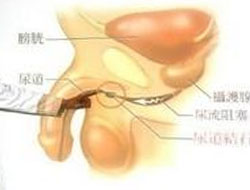
The presenting symptoms of urethral syndrome included urinary frequency and dysuria without demonstrable infection. As a diagnosis, urethral syndrome (also known as or frequency-dysuria syndrome) is controversial and may be an outdated term, partially because of the lack of consensus on specific diagnostic criteria and overlap with other diseases such as interstitial cystitis (IC) or painful bladder syndrome.
Up to one quarter of patients presenting with lower urinary tract symptoms may have urethral syndrome, which is characterized by urinary frequency, dysuria, and suprapubic discomfort without any objective finding of urological abnormalities. It is also characterized by sterile urine culture results and urinary frequency that is typically worse during the day than during the night. The dysuria and constant suprapubic discomfort is partially relieved by voiding. Patients with urethral syndrome may also report difficulty in starting urination, a slow stream, and a feeling of incomplete emptying of the bladder.
Most patients diagnosed with urethral syndrome are women, typically aged 30-50 years. Vaginal discharge and vaginal lesions must be excluded. The patient’s history is important, as the diagnosis of urethral syndrome is one of exclusion.
 The presenting symptoms of urethral syndrome included urinary frequency and dysuria without demonstrable infection. As a diagnosis, urethral syndrome (also known as or frequency-dysuria syndrome) is controversial and may be an outdated term, partially because of the lack of consensus on specific diagnostic criteria and overlap with other diseases such as interstitial cystitis (IC) or painful bladder syndrome.
The presenting symptoms of urethral syndrome included urinary frequency and dysuria without demonstrable infection. As a diagnosis, urethral syndrome (also known as or frequency-dysuria syndrome) is controversial and may be an outdated term, partially because of the lack of consensus on specific diagnostic criteria and overlap with other diseases such as interstitial cystitis (IC) or painful bladder syndrome.